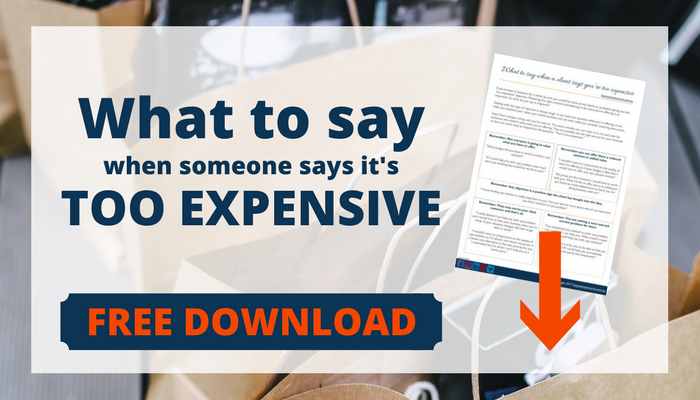Waiting to be asked
When a customer makes a decision to buy from you, it’s likely they won’t come straight out and say it. As the business owner, it’s up to you to take charge of the buying process and know how to spot a buying signal from your customer.
Funnily enough, a lot of people don’t know how to say they’re ready to buy. They will give off hints, known as buying signals, and they’ll wait to be asked to buy.
If you’re not on the ball and you don’t ask for the sale, you stand a good chance of your customer walking away without buying.
What are buying signals?
A buying signal is your customer telling you they are ready to buy. To spot a buying signal, you have to be listening, watching and paying close attention to what your customer is saying and doing.
Buying signals can can be verbal or non verbal and sometimes they can even sound like objections. It’s vitally important to know the difference.
Buying signals can easily be mistaken for objections. It's important to know the difference. Share on X
How do you know when you’re getting a Buying Signal?
Customers can give off all types of signals to let you know they’re ready to buy. The signals can be subtle. The customer may appear undecided but actually they’re telling you they’re interested and they’re waiting to be asked to buy. It’s up to you to recognise the signal and then move forward with asking for the sale.
How to spot buying signals. Here are 12 examples of what to watch out for:
Positive body language
Signals such as nodding, smiling and leaning into the conversation are all signs they’re interested in what you have to offer.
Spending a lot of time looking at your offer or coming back more than once
This is a good sign they’re very interested. They’re likely trying to justify their purchase and looking for reassurance but unable to find it.
Asking questions about details
If they’re asking questions like “does it come in another colour” or “how long does the course go for?”, they’re showing interest in your business being able to provide a solution to their need.
Asking about price
When a customer volunteers to ask about price, they believe the solution is a good fit. The price question is to validate the exchange of value.
Asking about warranty or terms
When a customer asks about the warranty or your terms of service, they’re reassuring themselves of the reliability of doing business with you and this means they’re interested in buying.
Asking about start dates or delivery times
This is a good sign the customer has decided the solution fits and they’ll be close to buying.
Suggesting alternatives
After you give your recommendation, your customer might suggest an alternative solution which tells you exactly what they’re ready to buy right now. This buying signal is easily mistaken as an objection because they’ve rejected your recommendation. It’s not!
Asking about payment methods
Whenever a customer brings up the topic of money or payments, it’s a good sign they’re interested in completing the transaction..
Asking about your experience or your company history
When a customer wants to know more about you or your business, they’re seeking reassuring you’ll be a safe option to do business with.
Asking for repeat information
If a customer asks you to repeat any part of the conversation, they’re likely wanting to reassure themselves they are making the right decision.
Talking about how they will use it
If your customer is picturing the solution and visualising already using it, they’re most likely already convinced about the sale.
Asking to buy
Of course when a customer asks you directly if they can buy or tells you they are ready to start, you’ve already closed the sale!
Be ready to ask for the sale
At any point, despite any or all of these buying signals being displayed, your customer can easily walk away if you aren’t attentive and ready to help them through the buying process.
It’s important not to be pushy, but to listen and wait for the customer to tell you they’re ready, and when they are, simply invite them to buy.
Be sure to check back for part two next week where I’ll cover ways to ask for the sale.




One Reply to “How to spot buying signals — 12 ways customers give you the nod”